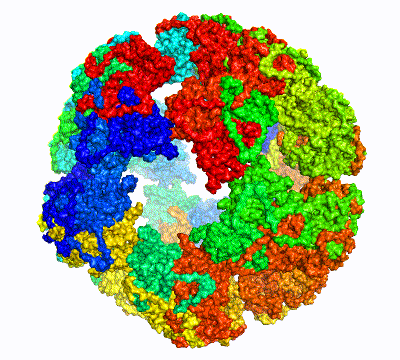Join leading researchers advancing nanomedicine, bioengineering, and molecular design through the power of protein cages.


The Protein Cage Network stemmed from a collaboration in Functional Design of Protein Cage for Sustainable Bionanomaterial project between members of the Asian Science and Technology Pioneering Institutes of Research and Education (ASPIRE). The website was supported through a joint research project by the Japan Society for the Promotion of Science (JSPS) and Nanyang Technological University (NTU), Singapore in collaboration with Tokyo Institute of Technology (TITech). It was officially launched at the Pacifichem in 2021 as part of the symposium Chemistry and Applications of Protein and Virus-based Nanotechnologies.
Protein Cages are protein particles of nanometer size that are formed by the self-assembly of multiple protein subunits. They perform natural functions that range from storage proteins (e.g., ferritin) and protection (e.g., heat shock proteins, encapsulin) to catalysis (e.g., E2 of pyruvate dehydrogenase) and transfer of genetic materials (e.g., virus). With the boon of nanotechnology, protein cages have been repurposed and engineered to serve non-natural functions, including scaffolds for display of multiple ligands for vaccine applications, delivery systems for therapeutic agents, active molecules and imaging agents, and more recently molecular electronics. They are the main players of nanobiotechnology-bionanotechnology fields.
From understanding the process to tuning the assembly of the subunits that build the protein cages and the assembly of the protein cages to higher order structures require development of techniques to characterize the structures of the assemblies.


Ranging from repurposing to engineering, myriad applications of protein cages have been explored for health applications and beyond.



Apply to the Physics of Viruses
and Protein Cages exploring the intersection of molecular Design, dynamics
and biological Function. Apply for this conference by December 14th and register by December 21st, 2025

Join us at “Protein Cages as Next Generation Nanomaterials” Symposium! The Symposium (E8) is is co-chaired by Kanchan Chauhan (UNAM), Rafael Vasquez Duhalt (UNAM) and Sierin Lim (NTU Singapore) and is part of the 32nd International Materials Research Congress (IMRC) organized by Materials Research Society (MRS) and Sociedad Mexicana de Materiales (SMMater) in Cancun, Mexico on 21-22 August 2024.

NEW book on Protein Cage in Methods in Molecular Biology by Springer Nature co-edited by Takafumi Ueno, Sierin Lim, and Kelin Xia was published in 2023.

The Protein Cage Network was launched today, on 20 December 2021 at the Pacifichem during the Chemistry and Applications of Protein and Virus-Based Nanotechnologies symposium organized by Nicole Steinmetz, Frank Sainsbury, and Sierin Lim!
